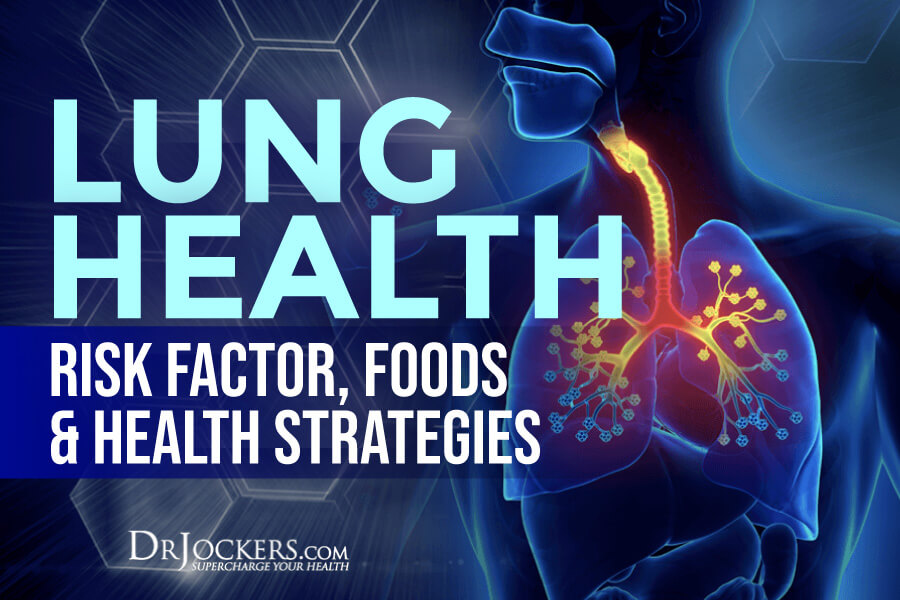 Lung Health: Risk Factors, Foods & Health Strategies
Lung Health: Risk Factors, Foods & Health Strategies
Your lung health is one of the most important aspects of your health. Your lungs are a pair of the pyramid-shaped organs located inside your chest. They help your body to bring in oxygen and release carbon dioxide. Breathing is a vital function of life. You need oxygen not only to thrive but to stay alive. Your entire body relies on the healthy functioning of your lungs so it’s critical that you take care of your lung health.
In this article, I will explain how your lungs work. You will understand the top causes of lung problems. I will share my top strategies to improve your lung health natural and the top supplements for lung health.

How The Lungs Work
Your body needs oxygen in order to function healthily, as well as, to simply stay alive. This is where your respiratory system comes in. Your lungs are a very important part of your respiratory system. They are a pair of pyramid-shaped organs that are located inside your chest. Healthy lungs have a pinkish-gray color and a spongy texture.
Your lungs help your body to bring in oxygen during inhalation when you are breathing in and to release carbon dioxide during exhalation when you are breathing out. Breathing is one of the key vital functions of life. Your lungs help a necessary gas exchange adding vital oxygen to your blood and removing a waste gas, carbon dioxide from your body.
In addition to this essential gas exchange, your lungs and respiratory system also play a role in protecting your body from toxins and other harmful substances through filtering, sneezing, coughing, and swallowing, bringing air to the right temperature, moisturizing the air your breath in, and supporting your sense of smell.

Healthy Lung Function
Your lungs work together with the rest of your respiratory system that allows breathing. Besides your lungs, your respiratory system includes your airways, including your nose, sinuses, mouth, throat, trachea or windpipe, and bronchial tubes.
Your circulatory system, including your veins, arteries, capillaries, and heart play an important role in respiration by moving blood from and to the lungs, delivering oxygen and nutrients to tissues, and removing carbon dioxide. Your diaphragm, ribs, and muscles in the chest area also play an important role in lung function and breathing. Moreover, your nervous system, lymphatic system, and immune system work closely together with and depend on your respiratory system.
You can see that your lungs are not solo warriors but work in a team with the rest of your body. Their healthy functioning depends on the health of your entire body and your body’s health depends on the health of your lungs. You may understand now why it’s so important to understand the potential causes of lung problems and know how to support your healthy lung function naturally (1, 2).

Causes of Lung Problems
In order to protect your lungs, first, you have to understand the potential causes of lung problems. Let’s look at the top causes of lung problems.
Smoking
Did you know that someone who smokes 40 packs of cigarettes a year between ages 20 and 60 will have smoked and inhaled about 290,000 cigarettes over 40 years? Many people smoke much more than that despite the warning labels on cigarette boxes and general awareness of the dangers of smoking. Smoking cigarettes is incredibly dangerous to your lungs.
It can increase the symptoms of asthma, allergies, and chronic upper-respiratory problems. It increases the risk of chronic bronchitis, chronic obstructive pulmonary disease (COPD), and lung cancer. There are countless studies on the negative effects of cigarettes.
One study published in 2002, for example, followed smokers for 11 years. Participants of an initial Lung Health Study (LHS) were invited back to a follow-up 11 years later. Spirometry was performed in 77.4 percent of the surviving participants of the original study. Of those participants, researchers observed a 66.1 ml/year decline in lung function in men and 54.2 ml/year decline in women who continued to smoke throughout those 11 years, and 30.2 ml/year decline in men and 21.5 ml/year decline in women who quit smoking after the initial Lung Health Study (3, 4, 5).
It is not just smoking cigarettes that are harmful to your lung health. Smoking cigars and pipes can also contribute to lung damage. Regular exposure to second-hand smoke can be just as harmful to your lungs. Using e-cigarettes or vaping is also dangerous to your lung health. Even the Centers for Disease Control and Prevention (CDC) and the US Food and Drug Administration (FDA) warns us about lung injuries associated with vaping. Lastly, while medical marijuana certainly can offer some benefits to those with cancer or various chronic health or pain conditions, smoking marijuana may also damage your lungs (6, 7, 8).

Chronic Inflammation
You may develop chronic inflammation as a result of a regular poor, inflammatory diet, chronic stress, chronically poor sleep, unhealthy lifestyle choices, and toxic exposure. Chronic inflammation increases your risk of chronic disease and pain in your body, including lung disease.
It makes your immune system more vulnerable to infections that may increase your risk of infections that can lead to short- or long-term lung problems, including pneumonia, bronchitis, and so on. Chronic inflammation may also increase your risk of chronic lung inflammation, which according to a study published in 2012, can also increase your risk of cardiovascular problems resulting in a vicious cycle of inflammation and chronic disease (9).
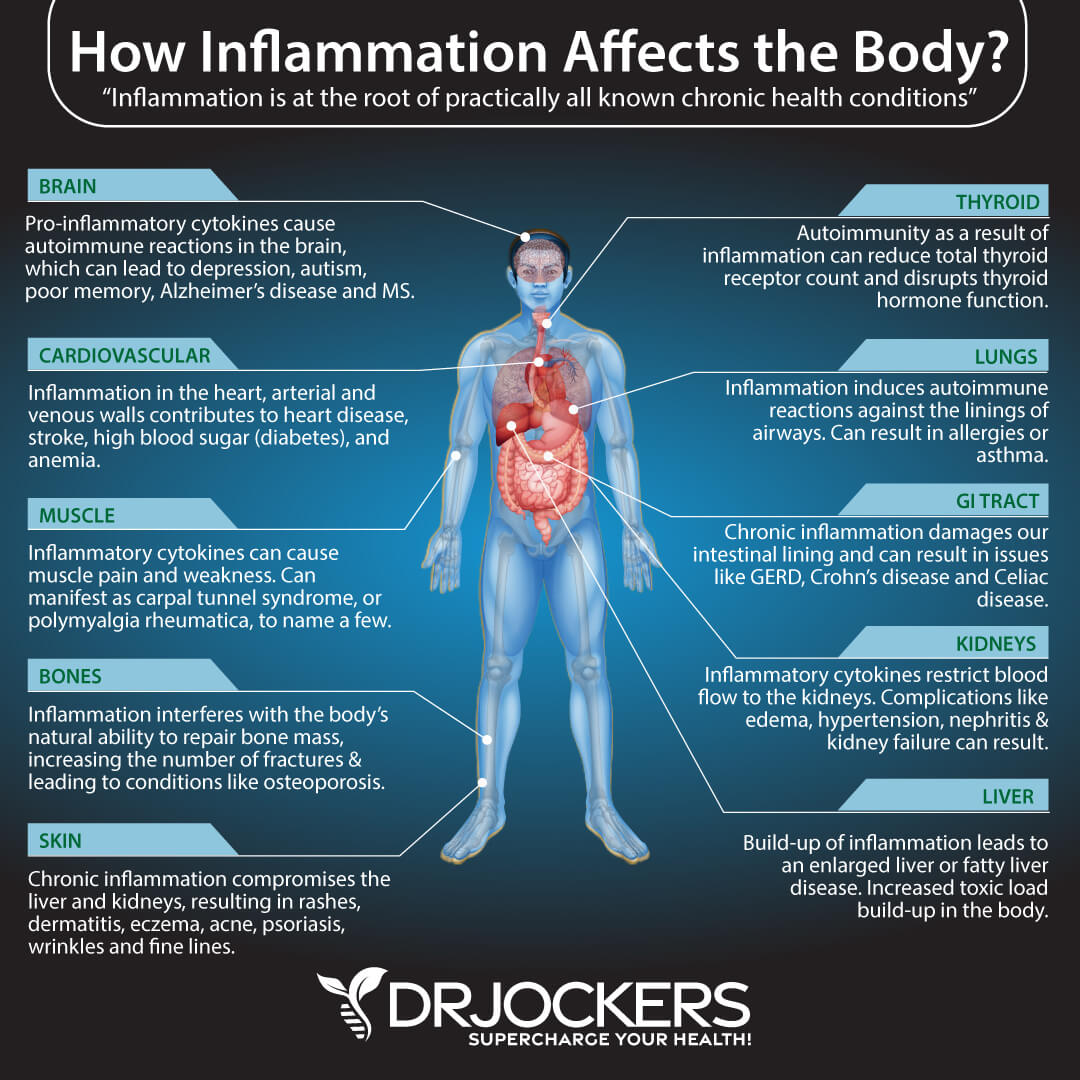
Infection
Viral and bacterial infections can increase your risk and lead to both short-term and long-term lung problems and lung damage. Viral and bacterial infections can lead to bronchitis and pneumonia. For example, difficult cases of influenza, coronavirus, or even the common cold in those with compromised immunity or lung function may lead to bronchitis, pneumonia, or other lung-related complaints, as well as potential long-term lung damage.
Bronchiectasis is an irreversible, progressive dilation, expansion, inflammation, and scarring of the bronchi, which are the tubes carrying air to your lungs. One of the main causes of this condition is bacterial infections, including Staphylococcus aureus, Mycobacterium tuberculosis, Klebsiella pneumoniae, Hemophilus influenzae, Mycoplasma pneumoniae and Pseudomonas aeruginosa, however, viral infections, including measles, adenovirus, influenza, and herpes may lead to bronchiectasis as well.
A weak immune system can make your body particularly susceptible to lung infections and increase your risk of chronic infections and lung problems (10, 11, 12).
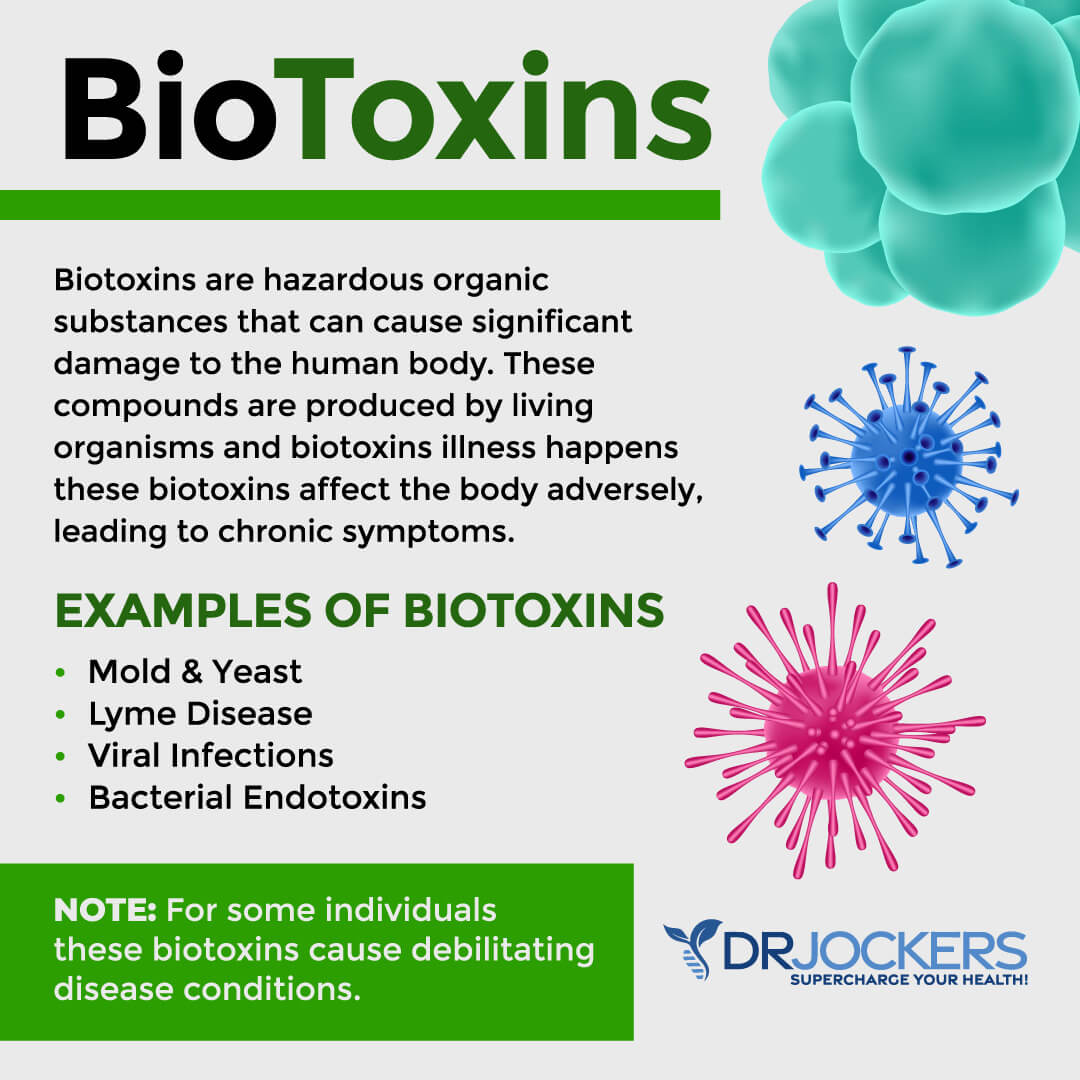
Mold Exposure
Mold is a type of fungus that can grow almost anywhere, especially in moist and warm environments. It can grow both indoors and outdoors. Inside your house, it can most commonly hide in your bathroom, kitchen, and basement, or other damp, warm, and moist areas.
The problem is that mold spores can spread wide and far, so even a bit of mold in your home can lead to chronic symptoms and serious health complaints. Respiratory issues, lung problems, asthma, and allergies are only some of the few symptoms and health issues that mold exposure may lead to or may amplify. To learn more about mold, mold exposure, mold toxicity, and recovery, I recommend reading this article (13, 14).
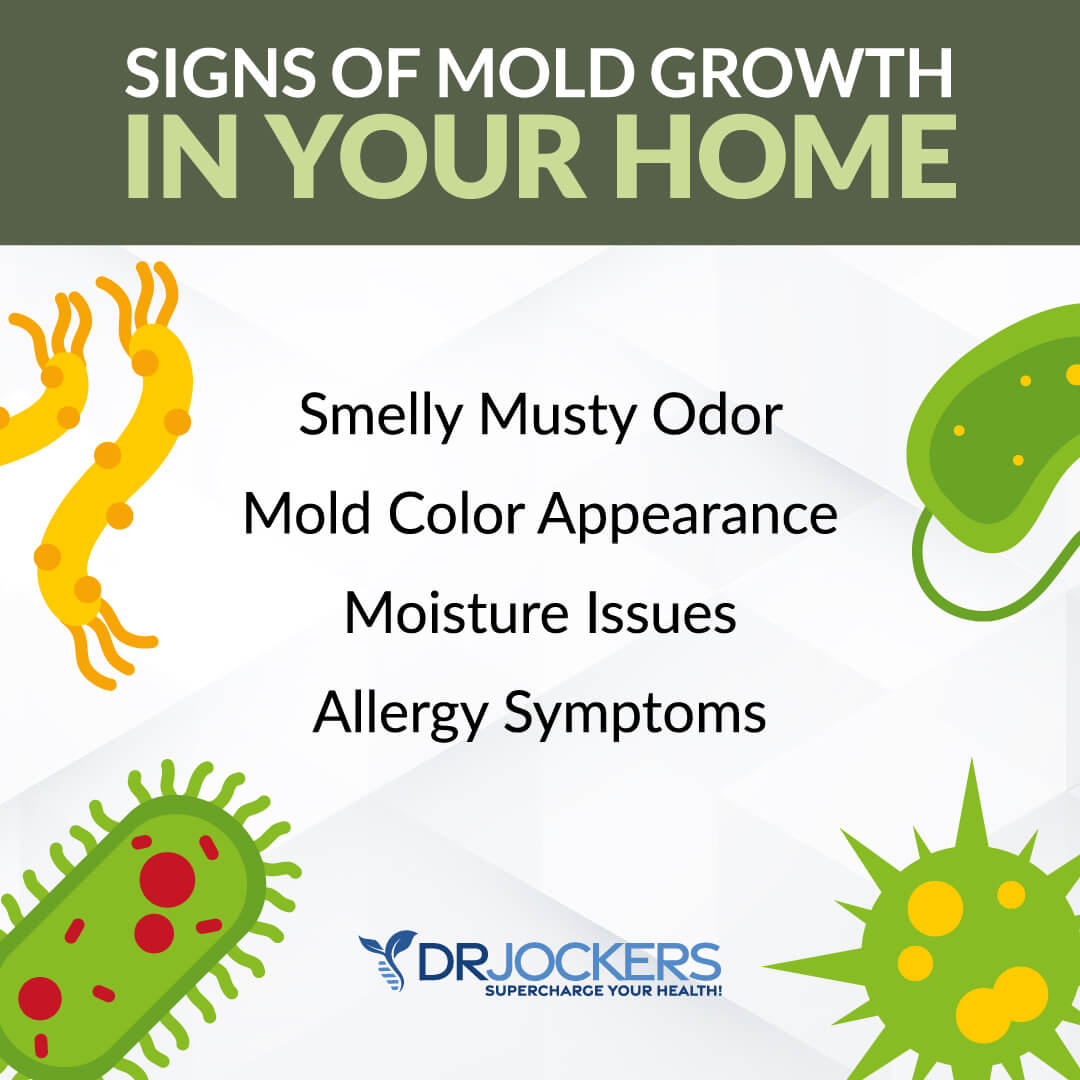
Air Pollution
Air pollution is an enormous problem in our modern, industrial world, especially in urban areas. Emission from cars and other vehicles, emission from factories and industries, cigarette smoke, smoke from human-caused fires, waste in landfills, agricultural activities, burning fossil fuels, mining operations, dust from unpaved roads, natural events, and indoor air pollution all lead to air pollution, and it’s near-impossible to completely escape it.
This is a serious problem. According to a 2019 study, long-term exposure to air pollution can be just as harmful as smoking cigarettes. Air pollution can increase your risk of asthma, allergies, chronic respiratory problems, lung infections, chronic bronchitis, reduced lung function, and lung cancer (15, 16).
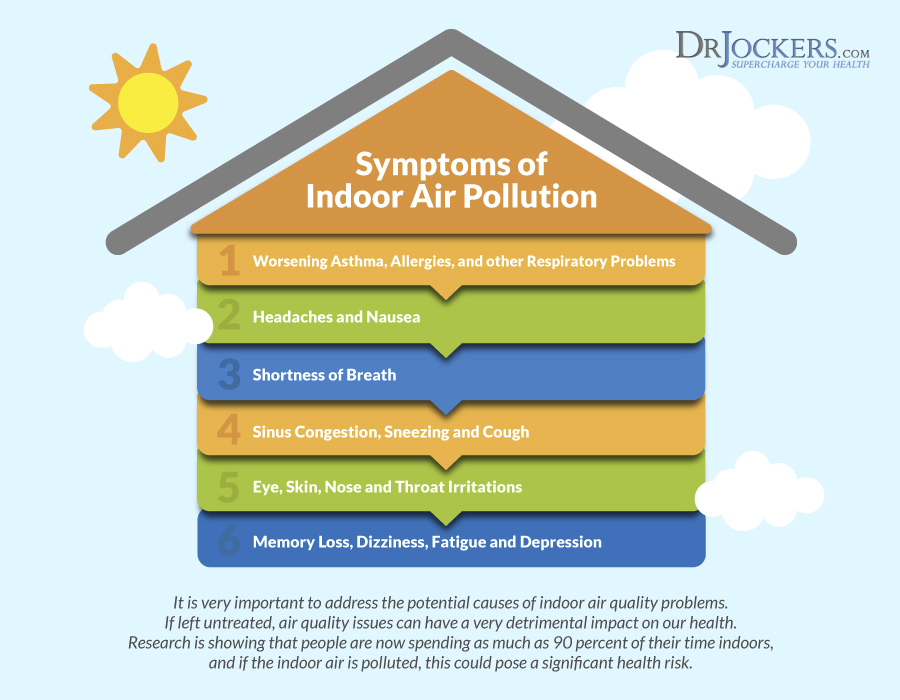
Hypertension
Pulmonary hypertension is a condition in which you have high blood pressure in your lungs. This form of high blood pressure only affects the blood vessels between your lungs and your heart instead of all your blood vessels with regular hypertension.
If these blood vessels become narrowed, blocked, thick, or stiff, your heart has to use more power, work harder, and use more force to push blood to your lungs, which can increase your blood pressure in these blood vessels, such as your lung arteries and capillaries.
Being overweight, existing lung disease, illegal drug use, certain medications, family history, genetic mutations, congenital heart disease, interstitial lung disease, and COPD can increase your risk or lead to pulmonary hypertension. If left unaddressed and untreated, pulmonary hypertension may lead to arrhythmia, blood clots, and heart failure. Symptoms of pulmonary hypertension may include fatigue, dizziness, rapid heart rate, chest pain, and swelling (edema) in your ankles (17).
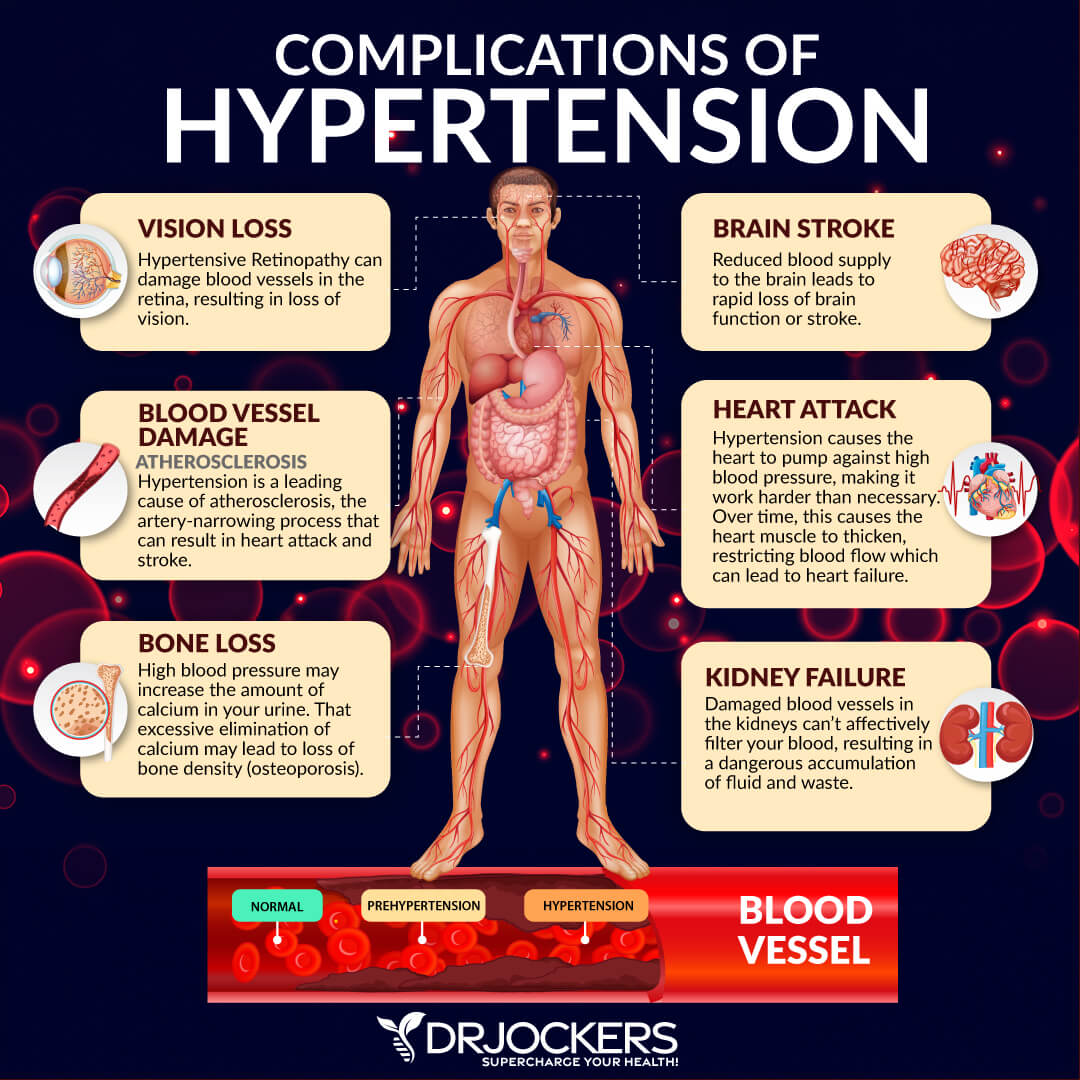
Top Strategies to Improve Lung Health
You need air to survive to thrive. Your entire body depends on a healthy lung function. It’s only common sense that taking care of your lung health should be a priority. Here are my top strategies to improve your lung health:
Anti-Inflammatory Nutrition Plan
As you know, chronic inflammation can lower your immune function, make you more susceptible for upper-respiratory infections that can increase the risk of short- and long-term lung problems, and increase your risk of chronic health issues, including allergies, asthma, chronic bronchitis, lung disease, and lung cancer.
Eating an anti-inflammatory nutrition plan is key to reducing chronic inflammation in your body and supporting your lung function. Remove inflammatory foods, such as refined sugar, refined oil, deep-fried foods, junk food, artificial ingredients, sodas, sugary drinks, and processed foods.
Follow an anti-inflammatory nutrition plan abundant in greens, vegetables, herbs, spices, low-glycemic index fruits, nuts, seeds, healthy fats, clean protein, and fermented foods. To learn more about the anti-inflammatory, ketogenic nutrition plan I recommend, read this article.

Intermittent Fasting
Intermittent fasting is a form of eating that cycles between not eating (fasting) and eating (feasting) over a period of time. It has countless benefits including cellular repair, increased autophagy, better immune regulation, reduced inflammation levels, increased insulin sensitivity, and lower risk of disease.
According to a 2007 study on 117 healthy participants, intermittent fasting during Ramadan has increased the lung volume and capacity of participants both during and after Ramadan. If you are a beginner, I recommend that you start with the Simple Fast, which includes only 12 hours of fasting including your overnight sleep. Slowly you can increase your fasting window.
Most people experience the most benefits with the 16:8 approach involving 16 hours of fasting, however, watch your body, energy levels, and symptoms to find what works best for your body. Make sure to eat plenty of nutrient-dense, anti-inflammatory foods during your eating window, and meet your caloric needs. To learn more about the benefits of intermittent fasting and best intermittent fasting practices, I recommend this article (18, 19, 20, 21, 22, 23, 24, 25, 26, 27, 28).

Reduce Stress & Improve Sleep
Reducing stress and improving your sleep are key steps to lower inflammation, support your immune system, reduce the risk of infections, improve your overall health, and as a result, also support your lung health. I recommend that you engage in activities that lower your stress levels, relax your body, and calm your mind.
Meditation, breathwork, journaling, grounding, gratitude, prayer, positive affirmations, practicing a positive mindset, spending time outside, exercise, connecting with loved ones, taking healing baths, and smiling more are great ways to reduce your stress levels. Make sure that you sleep 7 to 9 hours a night.
Go to bed and wake up at the same time to support your circadian rhythm and natural sleep cycle. Make sure that you get quality sleep instead of interrupted bursts of sleep. To support your sleep, make sure to remove sugar, avoid food and electronics close to bedtime, have a comfortable bed, bedding, and pillows, have a calming bed-time routine, and reduce stress overall.

Regular Movement
Moving your body helps to pump your heart, move more oxygen to your lungs, enhance lymphatic function, and support detoxification through sweating. I recommend that you exercise 20 to 30 minutes five times a week.
Mix up cardiovascular exercises, such as dancing, biking, rebounding, or jogging with resistance and strength training, such as weightlifting, bodyweight training, or TRX, and low-impact exercises, such as yoga, pilates, TaiChi, Qigong, light swimming, or light walks.
I love high-intensity interval training (HIIT) or Tabata workouts because they combine cardiovascular, strength, and resistance training within a short yet effective workout. In addition to your workout regimen, stay active throughout the day by stretching regularly, going for walks or hikes, playing with your kids or pets, taking the stairs, walking or biking instead of driving short distances, jumping on your trampoline, dancing to your favorite song, or even using a standing desk with an opportunity for small movements and better posture.
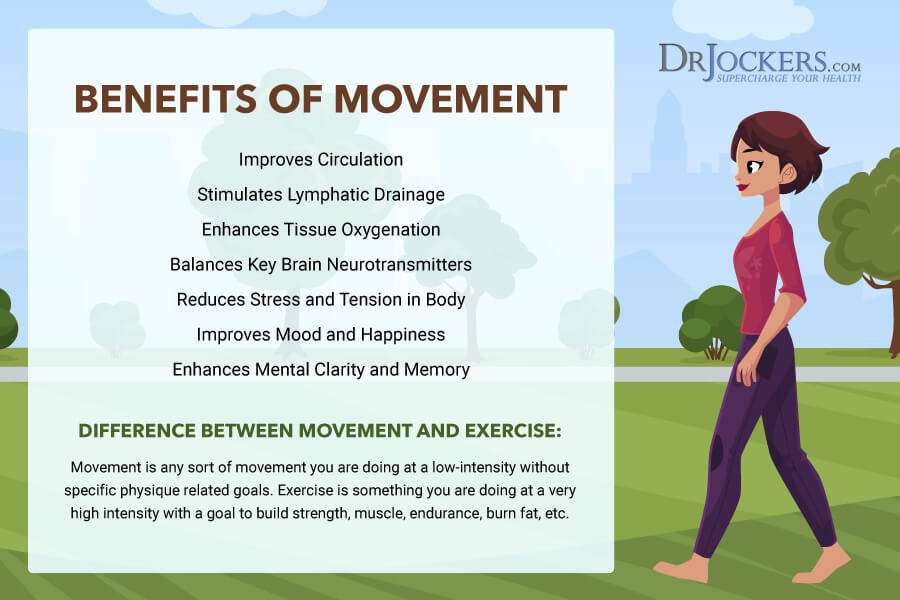
Clean Up Air & Water Quality
Improving your air and water quality is critical. While you may not be able to control the air in your environment, you can certainly improve your indoor air quality. Make sure that your home is mold-free. Invest in a quality HEPA air filtration system in your home, and if possible, in your office as well.
If you are not in control of the air quality at work, make sure to talk to your human resources department about the issue and encourage your employer to have a good filtration system and improve the air quality at work. I recommend the Air Doctor. Keep plenty of houseplants to increase oxygen and improve the air quality in your home. Take nature walks regularly to increase your exposure to fresh air, especially if you live in a city or polluted area.
Invest in a water filtration and purification system. I recommend systems like Aquatrue or the Berkey system for low-cost filtration. The best water is the UltraLux Triple Action Hydrogen Water Machine which is what I use at home as it is powered by molecular hydrogen which reduces oxidative stress in the body and improves immune function.
Refrain from plastic water bottles and bottled water. Use glasses, glass jars, glass water bottles, aluminum water bottles, or ceramic mugs. Add a slice of lime for some extra flavor.

Improve Detoxification Pathways
Improving your detoxification pathways is particularly important if your lungs and body have been compromised due to mold, air toxicity, allergens, infections, or even inflammatory foods. We eliminate toxins through respiration, urination, perspiration and defecation. So we want to improve our breathing, peeing, sweating and pooping.
Drink lots of water to support detoxification through sweating and urine. Try infrared saunas to promote detoxification through sweating. Rebounding and dry-skin brushing are great ways to support your lymphatic pathways. Support two major detoxifying organs, your kidneys and liver with herbs like milk thistle, parsley, dandelion and bioactive carbons which can penetrate and remove toxins from deep within the tissues and cells.
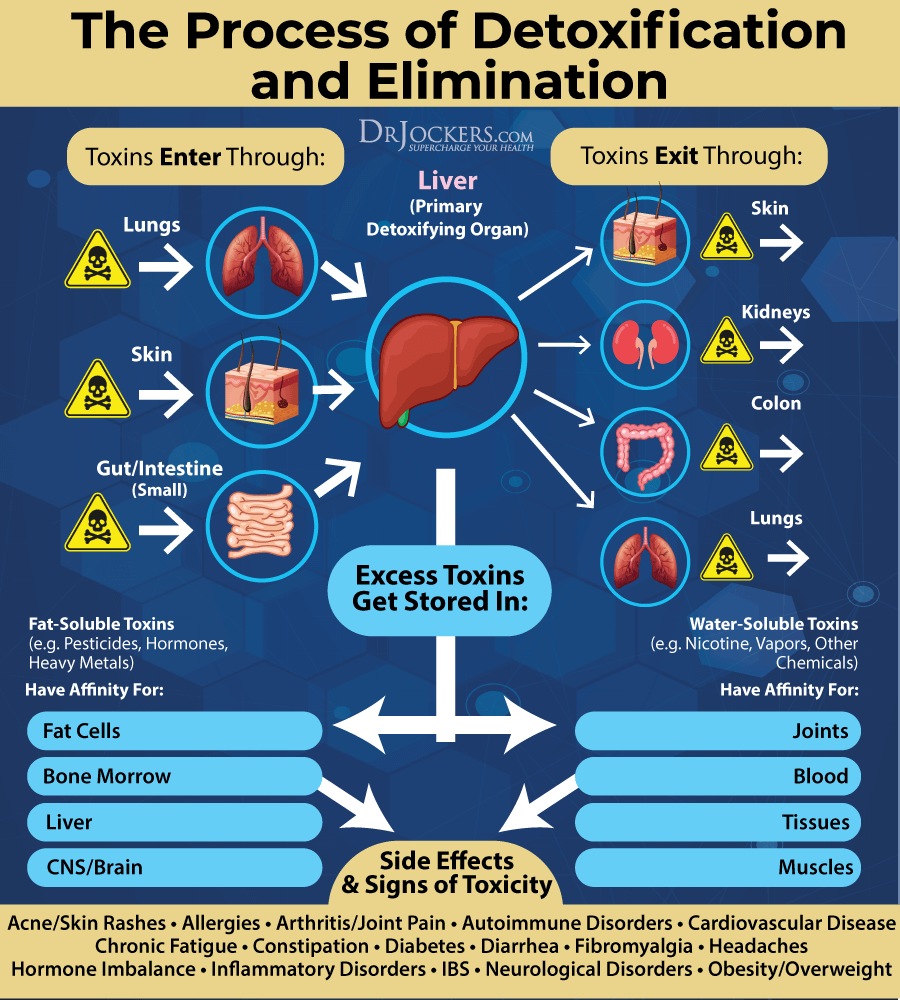
Nebulize Hydrogen Peroxide
A nebulizer is a piece of medical equipment that changes certain medications or therapeutic supplements from a liquid form to a mist, allowing you to inhale it into your lungs. Nebulizing helps to quickly administer the medication or supplement directly into your lungs.
Nebulizers have a mouthpiece or face mask to put over your face to inhale the mist through it. The therapeutic agent then goes straight into your respiratory system and lungs—exactly where you need it to take effect.
Hydrogen peroxide releases oxygen when applied to affected areas, which causes foaming action. This is because the blood and most living cells contain the enzyme catalase, which attacks hydrogen peroxide and converts it into water (H20) and oxygen (O2).
The oxygen free radicals have a negative charge that interacts with pathogens and damages their cell walls. This helps to destroy bacteria, clean areas, and remove dead skin cells. Your white blood cells make and use hydrogen peroxide to fight bacteria, viruses, fungi, and other pathogens.
To get started with nebulizing with hydrogen peroxide, I recommend this Desktop Nebulizer. It’s important that you always use food-grade hydrogen peroxide. I recommend this Essential Oxygen Food Grade Natual Hydrogen Peroxide. You can learn all the details on nebulizing hydrogen peroxide as well as silver, iodine and glutathione in this article here.
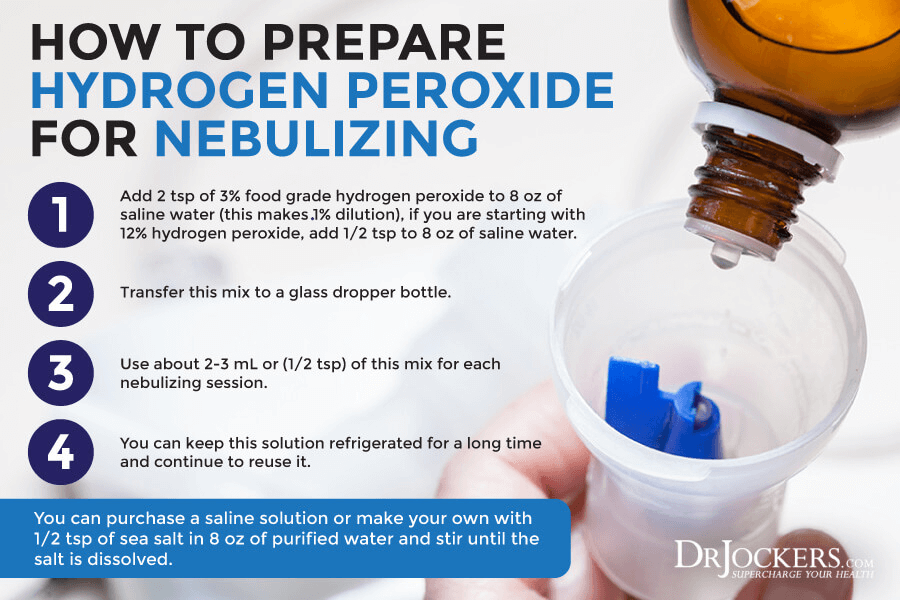
Best Supplements for Lung Health
You can further support your lung health with a variety of supplements. Here are the best supplements I recommend for lung health:
Resveratrol
Resveratrol is a powerful polyphenol found in the skin of grapes, red wine, and berries. It is a potent antioxidant. Resveratrol also offers research-backed lung health benefits. A 2017 study, resveratrol is an effective supplement for respiratory conditions.
According to a 2018 research, resveratrol may help to counteract lung and muscle impairments characteristic of COPD. Moreover, a 2004 study has found that it may be beneficial for reducing the severity of inflammatory airway diseases (29, 30, 31).
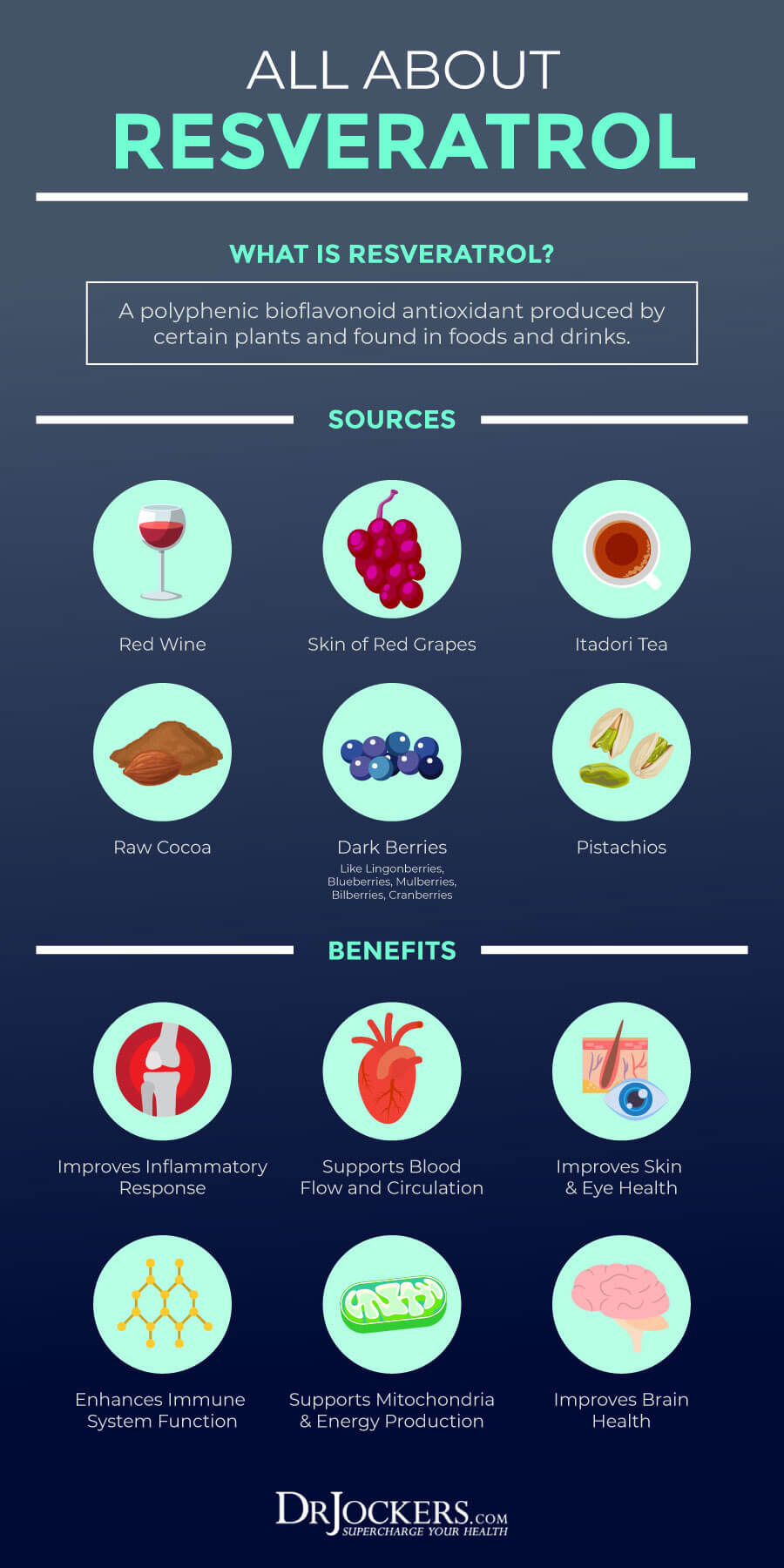
Quercetin
Quercetin is a powerful flavonoid that complements the positive benefits of resveratrol. Just like resveratrol, quercetin also has research-backed benefits for lung health. A 2016 rat study has found that quercetin may reduce inflammation and oxidative stress in acute lung injury.
A 2012 8-week randomized double-blind clinical trial on non-professional athletes found similar results. It found that an 8-week supplementation of quercetin and vitamin C can reduce inflammatory biomarkers and oxidative stress. According to a 2017 study, quercetin may benefit those with COPD by improving corticosteroid sensitivity. I recommend taking Resveratrol Power, a supplement powered by quercetin and resveratrol, daily for lung health support (32, 33, 34).
Omega 3 Fatty Acids
Omega-3 fatty acids are important fatty acids that are known to reduce inflammation in the body, therefore it may also benefit your lung health. According to a 2018 study with 642 participants, omega 3 fatty acids benefit asthma symptoms and reduce non-specific bronchial hyperresponsiveness (NSBH) (35).
Foods that are rich in omega-3 fatty acids include wild-caught fish, squid, mussels, hemp seeds, flax seeds, chia seeds, and algae. Plant based omega 3’s such as flax oil only contain the small chain omega 3 called ALA and do not have any DHA.
It is very hard for our body to convert ALA into DHA so it is best to get a high quality fish or krill oil that is rich in EPA and DHA. You want to find a brand that is molecularly distilled to take out any heavy metals and other unwanted contaminants.
Additionally, I recommend taking Pro Omega Curcumin to improve your omega 3 levels, improve inflammation levels, and support your lung health. Be sure to discuss with your physician before using as fish oils have a blood thinning affect and can be contraindicated if you are on blood thinning medications.

Vitamin D3
Vitamin D3 is an important vitamin that supports your muscles, bones, teeth, cardiovascular health, lung function, neurological health, and mental health. According to a 2017 randomized, double-blinded, placebo-controlled trial, long-term supplementation with vitamin D benefits lung function (36).
I recommend spending time on the sun and eating foods that are rich in vitamin D, including mackerel, salmon, tuna, cod liver, tilapia, and other fish. Since meeting your vitamin D needs through food and the sun alone is impossible, daily supplementation is absolutely critical. Taking a good quality vitamin D3 supplement on a regular basis and testing your 25-OH vitamin D3 levels a few times a year to make sure it is in the optimal 50-100 ng/mL range is recommended.

Herbal Support Formula
In addition to these nutrients, there are a number of herbs, including peppermint, eucalyptus, lungwort, and lemon balm, that offer potential health benefits for your lung health. According to a 2014 study, peppermint supports lung health and exercise performance. According to a 2017 study, eucalyptus may reduce inflammation and lung infection.
A 2018 study observed the antioxidant benefits of lungwort and a 2017 study noted the antioxidant benefits of lemon balm that may support lung health. For lung health support, I recommend Lung Health, a powerful herbal support formula powered by these and other lung-supporting herbs (37 38, 39, 40).
Final Thoughts
You need oxygen to live and you need your lungs to be healthy and function well for this necessary oxygen supply. Taking care of your lung health is no brainer. Your entire body and overall wellness rely on their healthy functioning. Follow my natural strategies to support your lung health and improve your overall health and wellness as a result.
If you want to work with a functional health coach, I recommend this article with tips on how to find a great coach. On our website, we offer long-distance functional health coaching programs. For further support with your health goals, just reach out and our fantastic coaches are here to support your journey.
Inflammation Crushing Ebundle
The Inflammation Crushing Ebundle is designed to help you improve your brain, liver, immune system and discover the healing strategies, foods and recipes to burn fat, reduce inflammation and Thrive in Life!
As a doctor of natural medicine, I have spent the past 20 years studying the best healing strategies and worked with hundreds of coaching clients, helping them overcome chronic health conditions and optimize their overall health.
In our Inflammation Crushing Ebundle, I have put together my very best strategies to reduce inflammation and optimize your healing potential. Take a look at what you will get inside these valuable guides below!






I have slung disease MAC and I suffer from depression and on-a medication that I feel makes my breathing worse! It is call trentellix 5 mg, I told my doctor and she said it does not! I decided to take half the pill in the am and other half in the pm. And it does seem to help! I was on 10mg and my breathing got really bad! Do you have any study or research on this drug that I can take to my dr?
Sorry to hear about that! I would discuss this with your doctor or functional health coach!
I’m 68 years old and I have been fighting with this bacteria Pseudomonas
since 2000. I’ll been in the hospital many times that I lost count. I get infection
and pains in my lungs all the time. I do the Food Grade Hydrogen Peroxide with distilled water. I use my nebulizer by hand. I know that is the wrong way now because I just read all your information. I have to ask if this is normal, about the food Grade HP. When I do it I have some problems with my breathing. My lungs are bad and I wonder if that is why I’m having this problem. I do my vitamin C,D3 every day. I was doing Zine but I started having a reaction and I stopped doing it. I’m on oxygen 24/7. If I put 3 drops on my nebulizer I’m ok. Will 3 drops still help me? I’m going to get the nebulizer that I need and do what you recommended.
Sorry to hear about this! Many people have tried nebulizing hydrogen peroxide with good results: https://drjockers.com/nebulizing/
Is Nebulizing H2O2 helpful for Pulmonary Fibrosis secondary to Scleroderma?
That is a great question, but unfortunately, we are unable to give detailed medical advice pertaining to any major health conditions.